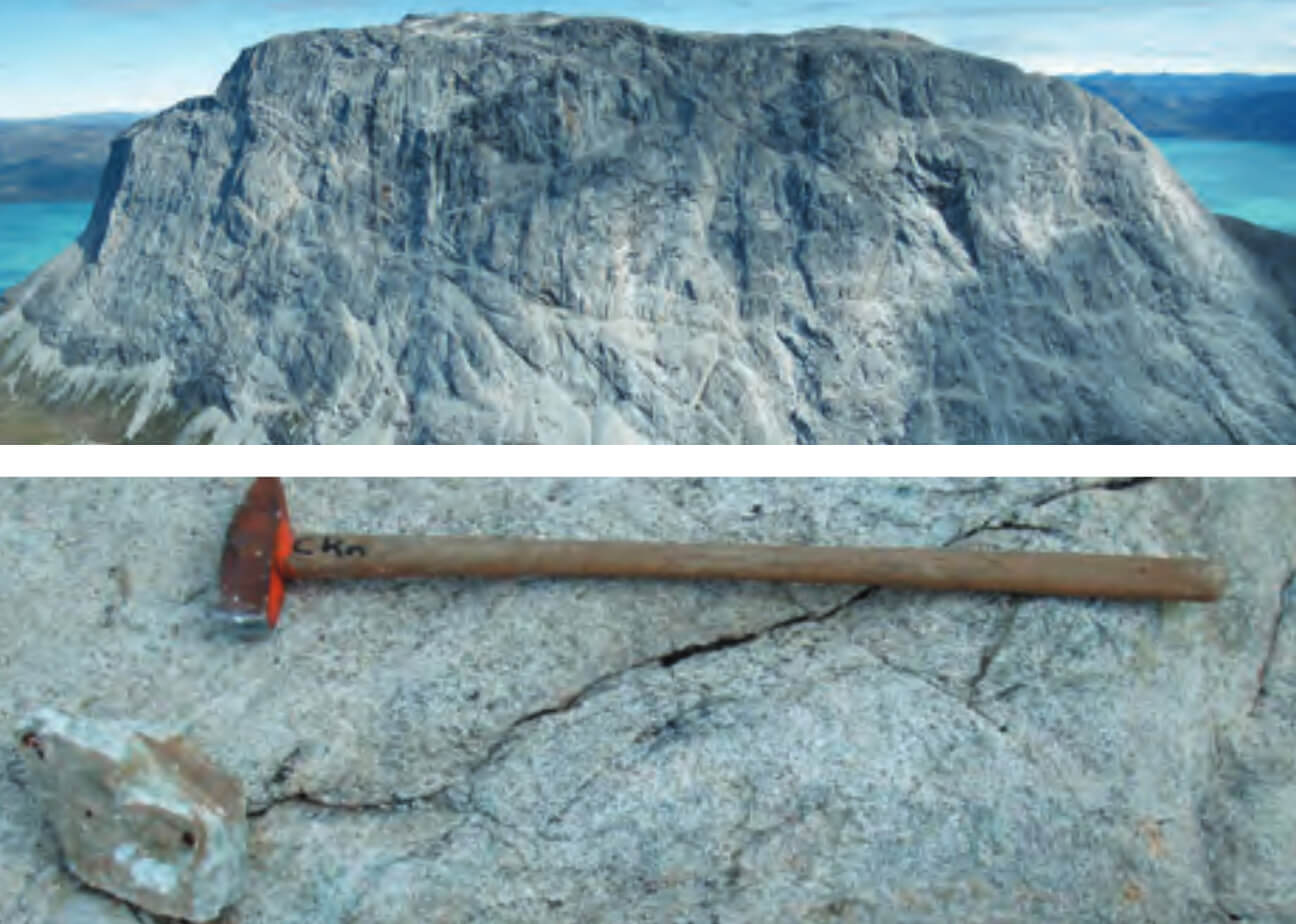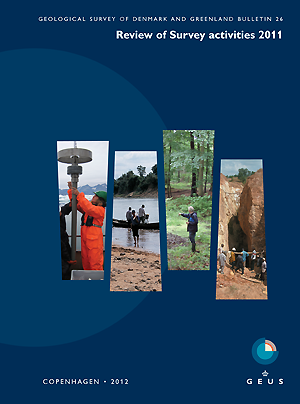
How to Cite
Share
Abstract
The famous Swiss-born, Norwegian geologist and geochemist Victor Goldschmidt suggested that anorthosite could be used as a source of aluminium replacing bauxite, and acid leaching of the anorthosite was his innovative idea. Anorthosite is a rock type consisting of more than 90% plagioclase which is an acid-soluble, aluminium-rich silicate mineral occurring in basement rocks of both Norway and Greenland (Fig. 1). Experiments conducted in Norway during the century after Goldschmidt’s initial idea showed that it is technically possible to use anorthosite as a raw material in the production of aluminium metal. Goldschmidt mapped parts of the large anorthosite massifs along Sognefjord in the period 1916–1919. During the Second World War, sampling and core drilling were conducted in Norway, and an anorthosite mine was opened by Norsk Hydro where up to 400 men were employed and some 15 000 tonnes of rock were quarried before sabotage ended the work in 1945. There was renewed interest in anorthosite as an alternative raw material for aluminium in Norway in the years 1976–1982, but experiments conducted in this period did not lead to an economically viable concept. Recent developments at the Institute for Energy Technology in Norway have led to the discovery of a more promising process based on nitric acid that can yield additional products such as Precipitated Calcium Carbonate (PCC) for the paper industry, amorphous silica and ammonium nitrate fertiliser. The process can also be used as a sink for CO2 by taking CO2 from, for example, a power plant and binding it to PCC.
How to Cite
Share
Copyright (c) 2012 Christian Knudsen, Jan Wanvik, Henrik Svahnberg

This work is licensed under a Creative Commons Attribution 4.0 International License.
Downloads
Edited by Ole Bennike, Adam A. Garde and W. Stuart Watt
This Review of Survey activities presents a selection of 20 papers reflecting the wide spectrum of activities of the Geological Survey of Denmark and Greenland, from the microscopic to the plate-tectonic level.
The Survey's activities in Denmark and surrounding areas are illustrated by [...]









